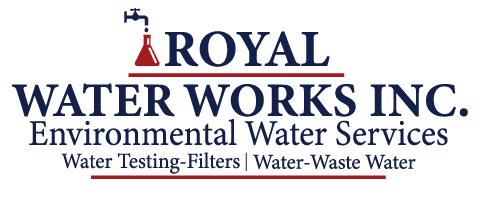
Understanding the Risks of Bacterial Contamination in Pisgah Forest’s Water Sources
Pisgah Forest, nestled in the scenic Blue Ridge Mountains of western North Carolina, is revered for its lush landscapes, cascading waterfalls, and pristine rivers and streams. This area attracts thousands of visitors each year for its natural beauty and recreational opportunities. However, beneath this serene facade lies a significant and often overlooked issue: the risk of bacterial contamination in local water sources. Understanding these water bacteria risks is vital not just for the protection of public health but also for the preservation of the ecosystem and the enjoyment of future generations.
Exploring the Origins of Bacterial Contamination
Bacterial contamination in natural water bodies typically originates from a variety of sources, both point-source and non-point-source. In Pisgah Forest, these sources include runoff from agricultural lands, improperly managed waste from campgrounds and recreational facilities, failing septic systems, and animal waste from both domestic and wild species. During heavy rainfall events, runoff containing animal feces, fertilizers, and human waste can wash into rivers and streams, carrying with it harmful bacteria such as E. coli, Giardia, and Cryptosporidium. These microorganisms are known to cause gastrointestinal illnesses, skin infections, and other serious health issues in humans.
Tourist activity, which surges during the spring and summer months, further exacerbates the problem. Hikers and campers who neglect proper sanitation protocols or dispose of waste improperly can unknowingly introduce contaminants into the water supply. Even well-meaning individuals who wash dishes or bathe in streams can contribute to bacterial load if not using biodegradable products responsibly. The cumulative effect of these behaviors significantly increases the potential for waterborne illnesses, especially in areas where natural filtration through soil and vegetation has been compromised by human activity.
The Impacts on Public Health and Ecosystems
The health implications of waterborne bacterial contamination are far-reaching. In North Carolina, particularly in regions like Pisgah Forest where outdoor recreation is a major attraction, there has been a noted rise in cases of water-related illnesses during peak tourist seasons. Swimmers and waders are especially at risk, as are individuals who drink untreated water during backcountry excursions. Symptoms from exposure to contaminated water can range from mild gastrointestinal discomfort to severe dehydration and infections requiring hospitalization. Vulnerable populations such as children, the elderly, and immunocompromised individuals are at the highest risk of complications.
Beyond human health, bacterial contamination also disrupts aquatic ecosystems. Native fish and amphibians are susceptible to bacterial infections, and a compromised ecosystem can lead to reduced biodiversity. The balance of these delicate ecosystems relies on clean water to support plant and animal life. When contamination occurs, algae blooms can flourish, further depleting oxygen levels and stressing aquatic species. The presence of bacteria in water bodies also threatens species that depend on clear water for spawning and feeding, potentially affecting the entire food web.
Monitoring and Regulatory Measures in North Carolina
Recognizing the serious threat posed by water bacteria risks, North Carolina has implemented various monitoring and regulatory programs aimed at mitigating contamination. The North Carolina Department of Environmental Quality (NCDEQ) oversees water quality standards and monitors numerous water bodies across the state, including those within Pisgah Forest. Regular water sampling is conducted, particularly in popular recreational areas, to test for fecal coliform bacteria and other indicators of contamination.
When bacteria levels exceed safe thresholds, advisories are issued, often urging the public to avoid contact with the water. In some cases, specific streams or swimming holes are temporarily closed to prevent exposure. Local conservation groups and universities often collaborate with state agencies to conduct more detailed assessments, especially in areas frequented by tourists or experiencing increased development. These efforts are crucial in identifying contamination sources and devising targeted remediation strategies.
However, enforcement and preventive action can be challenging due to the sheer size of Pisgah Forest and the decentralized nature of the contamination sources. Rural septic systems, for example, are difficult to inspect and regulate comprehensively. Moreover, funding for long-term infrastructure improvements and educational programs is often limited. These hurdles make community involvement and personal responsibility all the more important in managing contamination risks.
Community Awareness and Contamination Prevention
Preventing water contamination requires a multi-faceted approach that involves not just government oversight but active participation from residents, visitors, and local businesses. Educational campaigns play a key role in informing the public about the importance of clean water and the behaviors that can either protect or endanger water quality. In North Carolina, initiatives have been launched to raise awareness about responsible camping, proper waste disposal, and the dangers of untreated drinking water.
Simple preventative actions, such as maintaining septic systems, using eco-friendly products, and observing “Leave No Trace” principles during outdoor activities, can significantly reduce the risk of contamination. Farmers and landowners in the Pisgah Forest area are also encouraged to implement best management practices (BMPs) such as constructing buffer zones along waterways, managing livestock access to streams, and reducing fertilizer runoff.
Volunteer water quality monitoring programs have gained popularity as well, allowing citizens to play a direct role in protecting their local environment. These programs train individuals to collect water samples, report unusual findings, and advocate for local policy changes. Such grassroots efforts foster a sense of stewardship and have proven effective in supplementing official monitoring efforts. When individuals feel empowered to take action, the collective impact can be profound.
Looking Ahead: Sustainable Solutions for Pisgah Forest
As Pisgah Forest continues to attract visitors and experience changes due to climate variability and development, the need for sustainable water management strategies becomes increasingly urgent. Climate change is expected to bring more intense rainfall events to North Carolina, which could exacerbate runoff and strain existing water infrastructure. Additionally, increased temperatures may promote bacterial growth in water bodies, further elevating health risks.
Long-term solutions must include investments in green infrastructure, such as constructed wetlands and riparian buffers, which naturally filter contaminants before they reach water bodies. Improved data collection through advanced sensors and remote monitoring can also provide real-time insights into contamination events, allowing for quicker responses. Collaboration between state agencies, local governments, and private stakeholders will be critical in implementing these technologies and practices effectively.
Policy measures should also aim to strengthen enforcement of existing regulations while providing incentives for proactive measures. For example, grants for septic system upgrades or conservation easements can encourage landowners to protect water resources. At the same time, continued research into the sources and dynamics of bacterial contamination in the Pisgah region will help refine risk assessments and inform future policy.
Ultimately, preserving the purity of Pisgah Forest’s water sources is not just an environmental imperative but a moral one. Clean water is a shared resource and responsibility. By understanding the risks, recognizing the sources, and committing to effective prevention and mitigation strategies, North Carolina can ensure that its treasured forest remains a haven of health and natural beauty for generations to come.
Conclusion
Addressing water bacteria risks in Pisgah Forest demands a comprehensive understanding of the contamination pathways, the impact on human and ecological health, and the ongoing efforts to monitor and manage water quality. Through collaboration, education, and innovation, contamination prevention can become a cornerstone of environmental stewardship in North Carolina’s cherished mountain landscapes.
Got Questions? Let Us Help!
Welcome to Royal Water Works, Inc.! We are a family-owned business that has been serving the heart of Pisgah Forest, NC for over twenty years. As an environmental service company, Royal Water Works, Inc. partners with contract operations for water testing, water filtration design, wastewater operations, iron removal, PH adjusting, ultraviolet disinfection, and more. We provide a high degree of customer service and quality work to ensure we get the job done. Call us today; we can’t wait to hear from you!
Categorised in: Water Testing
